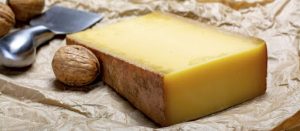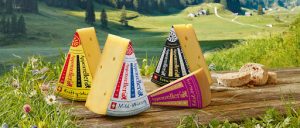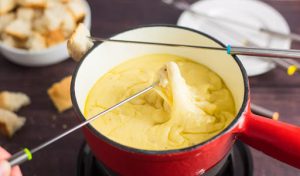Cheese Fondue: A Beginner’s Guide to a Meltingly Delicious Tradition

Cheese Fondue Table (Photo: Dorian Rollin)
Cheese Fondue is a melted cheese and wine dish served in a communal pot, placed over a portable burner stove, heated by a candle or a spirit lamp. It’s a classic Swiss meal and an interactive experience in which diners use long-stemmed forks to swirl chunks of country-style bread into the warm and gooey melted cheese.
Because of its social nature, fondue has become a beloved dish for gatherings, parties, and special occasions. This versatile dish continues to delight taste buds and bring people together worldwide. So, grab your fondue forks and prepare for a flavourful and fun dining experience with this classic Swiss dish and its exciting variations!
Characteristics of a Good Fondue Cheese
Three key characteristics can create an excellent fondue cheese:
-
Perfect Melting
The cheese selected for fondue should have a superior melting capability, resulting in a smooth, homogenous, and stretchy texture. This allows for easy dipping and coating of other ingredients, creating the classic fondue consistency.
-
Well-Balanced Flavour
The flavour of fondue should neither be too sweet nor too acidic. It should strike an ideal balance between the two. Whether combined with other cheese types or used for various dippers beyond bread, the cheese should have a versatile taste enhancing the overall flavour profile of the fondue.
-
Rich Character
The fondue should have a rich and distinct character, preferably with buttery and creamy notes. It should have enough depth and complexity to avoid being overwhelmed by other ingredients and dipper flavours.
Picking the Right Cheese for Fondue
Cheese fondue has many variations, from Swiss to Italian and French. But from a traditional point of view, the most authentic fondue experience is the Swiss. The traditional Swiss version is made using a combination of distinct cheese types, depending on the specific region in Switzerland. Regional recipes may feature varying proportions, but the following Swiss cheeses usually appear on most of them:
 A Slice of Gruyère Cheese (tasteatlas)
A Slice of Gruyère Cheese (tasteatlas)
-
Gruyère Cheese
Gruyère is a sweet and slightly salty cheese, with a flavour that varies widely with age.
When young, it is generally described as creamy and nutty. After maturing, the cheese’s taste becomes more assertive, earthy, and complex. Gruyère is often confused with Emmental cheese, as it used to have similar eyes (holes), but the modern version of this cheese has few eyes (if any).
 Appenzeller Cheese (le-superbe)
Appenzeller Cheese (le-superbe) -
Appenzeller Cheese
Appenzeller is cherished for its robust nutty taste, resulting from the unique production methods and aging process.
 Emmentaler Cheese (cheesesfromswitzerland)
Emmentaler Cheese (cheesesfromswitzerland) -
Emmentaler Cheese
Emmentaler (also known as Emmental, Emmentaler, or Emmenthal) is a mild-flavoured cheese with a slight buttery taste and a fruity and acidic tone. This gives this cheese the reputation of being one of the sweetest Swiss cheeses. In some parts of the world, the terms “Emmentaler” and “Swiss cheese” are used interchangeably.
Each of these cheeses contributes its unique flavour and texture to the cheese fondue. Experts often get creative by adding ingredients such as flour, mushrooms, herbs, tomatoes, or even chillies to elevate and customize the taste according to their preferences. This results in a delightful array of flavours and textures that add depth and complexity to the traditional Swiss fondue.
 Cheese Fondue Dip Examples (myrecipes)
Cheese Fondue Dip Examples (myrecipes)
Picking What to Dip in the Fondue
Picking the right fondue dipper can significantly enhance the overall experience. The key is to select food items that can hold up to the thick and gooey consistency of the melted cheese and their combined overall taste is dramatically better together than separately, or as we call it “1+1=5”.
-
Bread
–
is the perfect companion to cheese fondue. Some popular bread choices include sourdough, country French bread, rye, pumpernickel, Brioche, whole wheat, olive bread, Focaccia, Ciabatta, Naan, and Challah. It is recommended to toast the bread beforehand to prevent it from falling into the cheese when dipped. Whatever the choice, crusty or day-old bread is generally preferred over fresh one.
-
Vegetables
–
Asparagus, zucchini, artichoke hearts, mini sweet peppers, carrots, Brussels sprouts, cauliflower, tomatoes, broccoli, mushrooms, green beans, and baby, or fingerling potatoes are among the wide variety of vegetables that can be dipped in the hot melted cheese.
Roasted vegetables, in particular, can be a delightful option as fondue dippers, but you can also consider them pickled, steamed, or even raw, depending on your personal taste. Avoid overcooking the vegetables since they will not stay long on the fork.
-
Fruits
–
Pairing fruit with cheese fondue may not be the most obvious choice, but it can yield delicious results. Sliced apples, pears, and grapes are all excellent choices. For example, crisp and tart apples can complement the creaminess of the fondue, and bosc pears can enhance the spices.
-
Sliced Meat
–
Marinated sirloin, filet mignon, herb-roasted chicken, prime rib, mini-meatballs, beef jerky, miniature smoked sausages, duck breast, and chunks of ham are among the many variations of meat that can be used as fondue dippers. Cured meats like salami, chorizo, pepperoni, and soppressata are also excellent choices for meat lovers.
If you’re going to dip the meat into your fondue, just make sure it’s pre-cooked because the melted cheese won’t be hot enough to cook the meat at a safe temperature.
-
Shrimp
–
Lightly grilled or roasted shrimp with a hint of sweetness and buttery notes pair harmoniously with a rich and robust cheese mixture featuring brandy or white wine. You can enhance the shrimp’s flavour by cooking it with minced garlic and chopped parsley for an extra burst of taste.
The Perfect Beverage With Fondue
Finding the right beverage to accompany cheese fondue involves balancing acidity, richness, power, and freshness. Suggestions can range from white wine to Kirschwasser (or simply Kirsch). It is generally recommended to avoid red wine as the high tannin content will not combine well. Instead, opt for a white wine with a certain acidity to balance the dish’s fatty character. The white wine should also have enough power to complement the cheese’s powerful flavours.
 Fondue Cheese (thespruceeats)
Fondue Cheese (thespruceeats)
A Cheesy Tale: When Was Cheese Fondue Invented?
Fondue’s origins can go back to as early as Homer’s Iliad (ancient Greece), where a very similar dish was described as a combination of goat’s cheese, wine, and flour. The first written recipes for fondue as we know it today appear in 18th-century French and Belgian cookbooks, calling for a distinctly Swiss cheese (Gruyère) that can rightfully credit Switzerland as the birthplace of fondue.
The word “fondue” is the feminine, passive past participle of the French verb “fondre,” used as a noun, meaning “melted.” It was first recorded in 1735 in French and then in English in 1878. Over the years, the term has expanded to include other variations beyond cheese, for example, chocolate fondue or Bourguignonne.
Many believe that Swiss mountain peasants created it to stretch their limited resources during the colder months when they baked bread infrequently. Alpine villagers could gather around the table and transform stale bread into a delectable treat by dipping it into melted cheese. The dish may have had rural roots, but it was not limited to the peasants.
In 1930, the Swiss Cheese Union launched a campaign to promote fondue and increase cheese consumption in the country which had a huge impact on the popularity of the dish. After World War II, the campaign resumed successfully and this time fondue was portrayed as Switzerland’s national dish, symbolizing unity and identity.
By that time, fondue was still unknown in America. Fondue’s introduction to America happened in 1964 at the New York World’s Fair, where it was featured at the Alpine restaurant in the Swiss Pavilion.
 Cheese fondue etiquette, as a crucial part of the experience (expatica)
Cheese fondue etiquette, as a crucial part of the experience (expatica)
Savvy Fondue Etiquette: How to Dip and Sip with Style
Fondue is a shared meal eaten by spearing a piece of bread on a fork, swirling it in the pot, and putting it into the mouth. So it would be a good idea to use the dipping fork only to transport the food from the pot to the plate, not to eat. Crackers, chips, and other snack items can be dipped straight into the fondue pot without the need for a fork.
Cutting your dipping food items into bite-sized pieces before serving is a recommended practice since there should be no double-dipping of the same item into the fondue pot.
It’s also crucial to ensure that none of the pieces falls into the fondue pot. Losing a piece of bread in the fondue pot may trigger a penalty action by buying a round of drinks, singing a song, or even running around in the snow naked!
There are numerous ways to make a delectable fondue dish. Various Swiss regions boast their own distinct fondue recipes. While the preparation and additional ingredients for cheese fondue may differ, the key distinction lies in the social and interactive experience. Ask the Swiss where to find the best fondue, and they often give the same answer: at home.
Invite your friends and unite them all around the fondue table. Enjoy!




